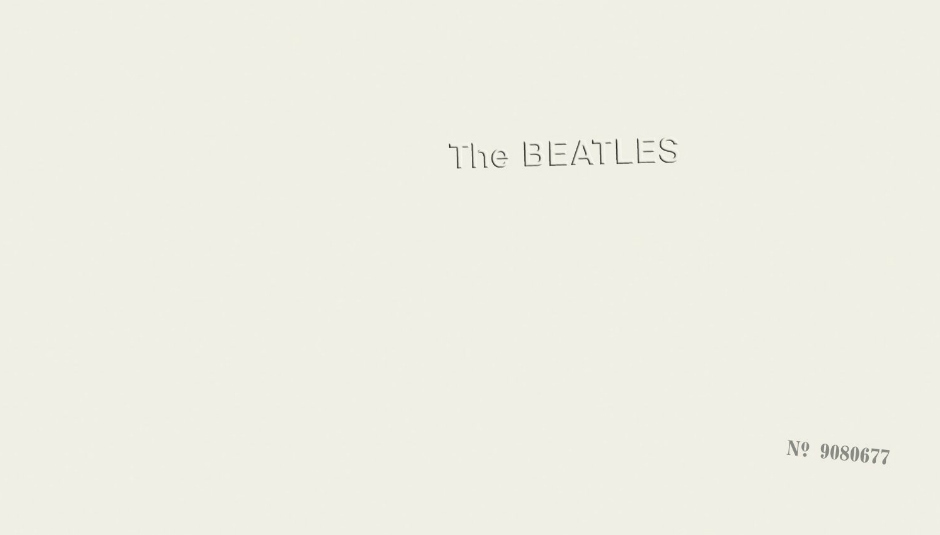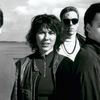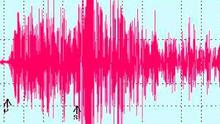As The Beatles returned from their meditative sojourn in India during the Spring of 1968 (George found enlightenment, Ringo missed his food), it must have been difficult for them to contemplate the swirling musical and political changes that were sweeping the Western world. In the space of three years, The Beatles had progressed from a superbly adept pop band (Rubber Soul), to an experimentally-geared creative hive (Revolver) and then to utterly redefining the role of the studio and contemporary culture for all time in forty extraordinary minutes (Sgt Pepper’s Lonely Hearts Club Band). In the space of just over one thousand days, they had defined the cultural heritage of their generation. However, alongside this, the previous thousand days had redefined so much more on a global, geopolitical level. With Vietnam escalating, Paris in flames, and the Black Power movement gaining support alongside shocking footage of assassinations, rioting, and technicolour war across the TV networks, the blissful ideals of the Hippy movement had been rocked: the Summer of Love was over. The Sixties were facing their hour of introspection.
As it transpired, so too were its biggest stars. Against the backdrop of these events – at George Harrison’s Kinfauns residence in Escher, Surrey in May of 1968 – The Beatles regrouped to begin recording the demos for what would become their eponymous ninth album. Just over six months later on November 22nd 1968, thirty sprawling, complex and strikingly-interlinked songs – taking up four sides of vinyl – were released to the world, all encased within a pristine white sheen of cardboard bearing only the embossed name of its creators. The scale and scope of the music contained within was another extraordinary step in the career of The Beatles. The genesis of the album, however, had creatively and emotionally exhausted them and within less than a year of its release, the four of them would never again be together in the same place.
The Beatles (or The White Album as it is most commonly referred to) has been a looming and inexorable influence on me throughout the course of my life. The first song I ever played on stage, at the Heaton Manor School Christmas concert back in 1995 was ‘Why Don’t We Do It In The Road?’ It was the first double album to which I ever listened. Its astonishing sprawl and disregard for convention brought me to metal, blues, music hall, experimental sound collages, reggae, country, and chamber pop, and so very much of what I have loved stems directly from my exposure to this record. It is an album that taxes and tries you. It is objectively far from a being flawless record, and listening deep within the grooves, you can feel the deep rumblings as their kinetic dynamics began to shift. Nevertheless, despite these imperfections and perhaps because of them, it remains one of the most intriguing and mesmeric records ever committed to tape – an album entirely worthy of bearing the title of the greatest band of all time.
The White Album remains an album entirely unlike any other. Unfettered by label pressures, free to experiment but fuelled by the frissons of conflict, the album is a unique window into a band having absolute creative control and struggling to comfortably wield it. The sheer musical scale of the record is never better illustrated than the extraordinary quintet of songs within its first half that begins with George Harrison’s towering, sweeping ‘While My Guitar Gently Weeps’ – a shot across the bows that the Lennon/McCartney control axis was genuinely changing. Then comes the three-act triptych drama of ‘Happiness is a Warm Gun’ – a song of astonishing vision, clarity and delivery; Lennon’s sneer and snarl giving way to rhythmic tumult and then glorious resolution. I swear, that little breath he takes before the final falsetto “Guuuuun” knocks me sideways, even after twenty-five years of listening. Then McCartney counters with ‘Martha My Dear’, a song about his fucking dog. Yet delivered with such exquisite poise and control that the hairs on the back of your neck tingle. Next, we get Lennon again – sarcastic and bluntly hilarious on ‘I’m So Tired’ which features the best lyric on the album “Although I’m so tired / I’ll have another cigarette / And curse Sir Walter Raleigh / He was such a stupid get”. And then, as pure as the song of its subject, McCartney’s elegiac, delicate, stupefying ‘Blackbird’. Such runs of exquisite beauty braid themselves consistently – like seams of gold beneath the earth – through the whole of the album.
But above below and between these seams of gold, cracks begin to form, cracks which would eventually loop round and collapse the whole strata in on itself. Endless takes – over 100 for the ultimately-unreleased Harrison composition ‘Not Guilty’, a full five days for McCartney’s ‘Ob-La-Di, Ob-La-Da’ – caused frittering tensions within the band members, which were to fully develop in the period following its release. Indeed, the ever-present and mercurial George Martin started taking an absence from sessions due to frustrations with the timing of the sessions impacting on his family life and the sense that the band were increasingly developing their own perspectives on how their songs should be recorded rather than his previously close tutelage. Indeed, it was Martin’s supporting team of Chris Thomas, Geoff Emerick, and Ken Scott that frequently found themselves taking the central role in the control booth as the sessions dragged on deep into the night, though Emerick ultimately quit midway through the sessions after a series of arguments and finding himself disenfranchised with the recording process.
Yet it wasn’t always that way. Listening to the newly released ‘Escher’ demos from the initial band sessions at Harrison’s bungalow residence, the early mood and atmosphere is jovial and enthusiastic. Mistakes are applauded and laughed at; the general atmosphere of bonhomie is pervasive. Yet by the end of the recording sessions, both Harrison and Starr had abruptly left the sessions at separate points in the recording due to disagreements. Both eventually returned, but the stark facts were that the dynamics of the band had changed significantly in a relatively short span of time and that the more the band progressed, the harder it was to hold the centre together. Harrison’s grievances were perhaps the most understandable – having developed significantly as a songwriter over the previous few years, he found many of his compositions sidelined in favour of the classic Lennon/McCartney axis. It is perhaps telling that a number of these rejected tracks ended up forming Harrison’s classic ‘All Things Must Pass’ album – possibly the finest post-Beatles solo record. Harrison would have been the lead songwriter in the majority of bands around that time, so the role of the bridesmaid was clearly difficult to take for him. That said, the brass and breeze of the Eric Clapton-inspired ‘Savoy Truffle’ and the gorgeous, ethereal ‘Long Long Long’ show the extent of his burgeoning talent, which would finally blossom beautifully on the following year’s Abbey Road album.
As for Lennon and McCartney, the early recording sessions were collaborative as they encourage each other, laugh at each other’s errors and speak with the clear camaraderie and kinship of friends and musical partners. Listening to the Escher demos now, across the gulf of five decades, it’s extraordinary how fully-formed and complete the songs were even at this embryonic stage. Yet while still recording together as a cohesive unit – raw and live in the studio and even decamping to a cramped Abbey Road storage cupboard for the scabrous ‘Yer Blues’, The White Album is the first true Beatles album where the two lead songwriters were essentially working separately without the collaborative nature of so many of the earlier Beatles tracks. If anything, John’s closest musical influence at this time was his new partner Yoko Ono, and there has often been uninformed and criticism of Yoko “interfering” with the tracks. If anything – the opposite is true. Ono’s background as a world-famous conceptual artist inspired Lennon up to explore his creative horizons on tracks such as ‘Revolution 9’ and ‘Happiness is a Warm Gun’. However, there’s no doubt that Yoko’s constant presence at the sessions (the two were already inseparable by this point) changed the overall band dynamic, specifically between John and Paul. Just like two close friends where one falls madly in love for the first time – the relationship began to fray by virtue of distraction and the loss of the known.
Despite this, however, their output remains dizzyingly prolific. Lennon’s cathartic, heartbreaking ode to his mother on ‘Julia’, McCartney’s dizzying and destructive ‘Helter Skelter’. John’s sneering and poison-tipped ‘Sexy Sadie’, Paul’s glorious opener ‘Back in the USSR’. Rarely do they drop the ball, though certainly tracks such as ‘Honey Pie’, ‘Cry Baby Cry’, and ‘I Will’, pretty and accomplished as they are, are less notable on an individual basis. But the beauty and inherent magic of The White Album is that these fragments, ideas, and conceptions twist together impeccably and mysteriously – becoming more than the sum of their parts when the entire 94 minutes is evaluated as a whole. And certainly, listening back through the new outtakes and session recordings, what is revealed is the sound of the band enjoying themselves: creatively white-hot and far more collaborative and focused than the conventionally-held wisdom of the band falling apart as the sessions dragged on. Indeed, George Martin’s son Giles (who has overseen the remixing of the album and the collation of the newly-released demos and session tracks) is adamant that the album is “definitely not the sound of a band breaking up”, and McCartney and Starr both speak incredibly fondly of their memories of recording the album.
Possibly the album’s most unique departure from their previous work is the infamous ‘Revolution 9’ – an expansive, bewildering sound collage largely put together by Lennon and Harrison with a vast array of musique concrete elements. It is monumentally self-indulgent, yet undeniably of huge importance in the development of such experimental musical ideas within popular music. Though McCartney had been playing around with tape loops and collages for many years (something that was brilliantly utilised on Revolver’s ‘Tomorrow Never Knows’ and Sgt Pepper’s ‘Being For The Benefit Of Mr Kite’), this was the first time the band had branched out into the truly avant-garde and well beyond the conventions of popular music. It is possibly the most divisive track on the album, yet on a recent BBC 6Music panel show with The Anchoress, Martin Freeman, and John Simm it was referred to as “the dark heart of The White Album” and I’m inclined to agree. In its confusion, its claustrophobia and its creativity, it is the perfect microcosm of the album and its recording process. I still have vivid memories of listening to it in the dark in my bedroom as a teenager – synapses burning as I tried vainly to contemplate its splintered acoustic tumult.
One criticism labelled at the album is its lack of specific political direction – at a time of revolution and riot, it seems to contrast with albums from the same era such as Love’s Forever Changes that more starkly and overtly paint the collapse of the Summer of Love ideology. Indeed, Nina Simone actually called Lennon out for his political inaction as the Civil Rights movement reached its tortured (if ultimately successful) conclusion and students raged in the centre of Paris. However, scratch the surface and there is much present reflecting the changing sentiment of the times. Lennon’s cagey “out…in” flip-flopping on the idea of destruction in ‘Revolution 1’ foreshadows his later full-scale engagement with activism, and though whimsical and playful, Harrison’s ‘Piggies’ takes on the subject of the class divide, in which the potential of violence is briefly raised, though pointedly in a comical manner. It is most certainly The Beatles darkest album, though this would seem more likely a reflection of the band’s own lives and dynamics rather than a true reflection of the work in mid-1968. Yet its true revolution is within musical and cultural form. Never before had a band been able to experiment so widely and in doing this, The White Album forever changed the course of what could constitute an album.
It is almost unthinkable that records as diverse as Physical Graffiti, London Calling, Melon Collie and the Infinite Sadness, 69 Love Songs or My Beautiful Dark Twisted Fantasy could have been made without the overarching influence of the record. The idea that albums could be this long, this sprawling, this disparate and complex is the true legacy of The White Album, and one that pervades to this very day. Its boldness and bravery was revolutionary, even if the band were not quite prepared to tackle the shifting cultural and political paradigms in any meaningful way. Of course, as people will know, a group of damaged and dangerous hippies took it upon themselves to interpret the album in a contorted and hideous manner, ultimately leading to the horrific deaths of nine people in LA in the summer of 1969 and began a longstanding issue with people misinterpreting the band’s increasingly surrealistic and fractured lyrics through the filter of religion and personal demons. This ultimately led to appalling attacks on Lennon in 1980 and Harrison in 1999 by disturbed individuals who found themselves unable to separate the art of songwriting from their own distorted realities. When they were not singing about love, many people gave a nefarious twist to simple tales such as ‘Rocky Racoon’ and ‘Blackbird’. It was a year of assassinations, attacks and violence throughout the world that The Beatles were yet to experience themselves, but that would return tragically to them as echoes in the decades to come.
The eternal question that has been, and forever will be, asked about The White Album is whether it should have been trimmed down to a single disc. The arguments are compelling – certainly, if you took the strongest 12 or 14 songs from the album and put them together as a whole, the quality would be beyond belief. However, in doing so, you would create an album that – whilst brilliant – would obey convention. And regardless of the purity of such a creation, the uniqueness of The White Album is its inability to conform and the astonishing musical territory it covers. I have always considered the “single album” theory a moot point because the true wonder of the album is not just related to its quality. The reason the record holds such mystery and eternal fascination is directly correlated with its disparity and flexibility. It is a record you can get lost in, travel within. Between the opening jet roar of ‘Back In The USSR’ and the final twinkling glimmers of ‘Good Night’, you feel part of a journey. It is still one of the only records that can exhaust and enchant you with its endless corners. It is the sound of unfettered creativity and the point where the band dipped into the darker and stranger regions of their mind - the result remaining singularly unique within popular music.
There will never be another album like The White Album because it’s almost inconceivable that any band would be allowed enough free reign to record with such impunity for convention. And as such, it stands as a unique document in popular culture. Its uniqueness is embedded within its scope, and within its scope lies a document of a band spreading out beyond comprehensible boundaries. Half a century on, it still sounds magnificent. If a band’s eponymous album is meant to capture them at their most honest and self-reflective, then it does precisely that – the beauty, the inspiration and the underlying darkness. It is the most extraordinary flare of creative energy highlighting the entire band at their most diverse and explorative, before the towering monster they had created tore them apart. Its beauty lies within its intimacy and its soul. It lets you in, it guides you. Like the thread in the maze of the Minotaur, it leads you – uncertain, often uncomprehending, but onwards and forwards – to discover new grounds and new possibilities. It is a work of extraordinary genius, in extraordinary times, from the most extraordinary band. And to this day, there has still never been anything to run it close. It is an album that changed my life beyond measure, and an album to which I still return frequently all these years on, to be pulled once again into its gravitational wonder.























